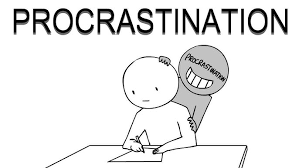We’ve all been there. The to-do list is long, the goals are clear, but something stops us from taking that first step. Instead of moving forward, we put things off – whether it’s the big project, that side business we’ve been dreaming of, or even the daily tasks that pile up. This cycle of procrastination can be exhausting and frustrating, leaving us feeling stuck and guilty for not making progress.
But what’s really happening when we procrastinate? And more importantly, how can we break free from it?
Understanding the Root of Procrastination
Procrastination is rarely just about laziness or lack of willpower. It often stems from deeper emotions like fear – fear of failure, fear of judgment, or even fear of success. Sometimes, it’s linked to perfectionism, where we hesitate to start because we don’t feel we can do it “perfectly.” Other times, it’s about overwhelm – when the task feels so big or important that we don’t know where to begin.
In any case, procrastination is usually about avoiding discomfort. Our brain naturally wants to steer clear of anything that feels risky, uncertain, or too challenging. But the longer we avoid taking action, the more that discomfort grows.
Strategies to Break the Procrastination Cycle
Here are some practical strategies to help you move from inaction to momentum:
1. Start Small with Micro-Actions
One of the biggest hurdles in overcoming procrastination is feeling overwhelmed by the size of the task. Break it down into the smallest, most manageable steps possible. Instead of thinking, “I need to launch my business,” focus on the first action, like “researching venues” or “writing an outline for my website.” By starting small, you’re less likely to feel paralyzed by the magnitude of your goal.
2. Set Clear Intentions, Not Expectations
Sometimes we procrastinate because we are fixated on a perfect outcome. Instead of focusing on the end result, shift your mindset to setting clear, actionable intentions. Think about what actions you can take today – whether or not they lead to perfection doesn’t matter. What matters is that you take a step forward.
3. Time Block for Focus
Procrastination thrives when we lack structure. Try using time blocking to allocate specific periods for focused work. For example, dedicate 20 minutes to work on a task, knowing you can take a break afterward. The Pomodoro Technique (working in 25 minute increments followed by a short break) is another popular method to help keep your brain engaged without overwhelming it.
4. Identify Your “Why”
When we lose sight of the bigger purpose behind a task, it’s easy to avoid it. Ask yourself, “Why is this important to me?” Reconnecting with your personal motivation, whether it’s achieving a long-term goal, improving your career, or aligning with your values can reignite your drive.
5. Practice Self-Compassion
Beating yourself up for procrastinating only deepens the cycle. If you don’t get something done today, it’s not the end of the world. Speak to yourself with the same kindness and encouragement you would offer a friend or a child. Instead of saying, “I’m so bad at this,” say, “I’m doing the best I can, and I’ll try again tomorrow.”
6. Take Action Before You Feel Ready
Often, we wait for the perfect moment to take action – when we feel more prepared or confident. But the truth is, there’s rarely a “perfect” time. Confidence grows through action. Taking one small step, even when you don’t feel fully ready, will build momentum and help you overcome the inertia of procrastination.
Moving Forward
Procrastination can feel like a tough habit to break, but it’s not insurmountable. The key is to be kind to yourself, start small, and take consistent action. You don’t have to get everything done today, but doing something – however small, creates the momentum you need to keep going.
Remember: It’s not about doing everything perfectly, it’s about moving forward, one step at a time.

